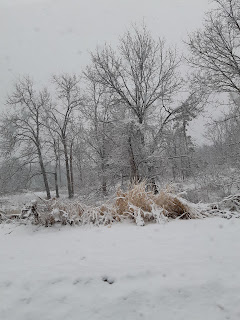Happy 2022! New Year, New…Who Am I Kidding?
Every year
it’s the same old:
· “I’m going to get in shape and lose
weight.”
· “I’m going to finally get that new
job/career.”
· “I’m taking my dream vacation.”
· “I’ll eat healthier.”
· “This year, I’ll budget and save
money.”
· “January 1st, I’m writing
my book.”
Nothing
wrong with that except life gets in the way and derails our plans. Not all the
time. But who can resist when your spouse brings home pizza? Or a blizzard hits
and the most exercise you get is shoveling the sidewalk and driveway before you
collapse on the sofa? Then the car breaks down or the dog gets sick and it’s
bye-bye dream vacation and budget.
But that
book. Now that’s something you can work with, right?
What’s so
hard about writing a couple hundred pages of that epic story you have swirling
around in your head? It’s only 70,000 words and you probably speak that many on
any given day. It can’t be so hard to write them down.
January
1: Fresh notebook and a pen Aunt Matilda
gave you for Christmas because she didn’t know what else to get you and you
could use it for work. Big cup of coffee—the lifeblood of writers—and…GO!
January
2: That empty page is still staring back
at you. It’s so crisp and white why would you want to mess it up?
January
3: Maybe you’d be best off writing on
the computer. That way I can do some research at the same time.
January 4:
Did you know it’s National Spaghetti Day?
February 1:
Okay, January was a bust. It snowed far too much to write and you spent most of
your time shoveling snow and working out the plot. Time to sit down with that
notebook and stay off social media.
February 14:
If you got caught writing today, the love of your life would disown you!
Tomorrow’s the day.
February 15:
Today’s the day! You sit at your desk. At work. And get pulled into meetings
all day. By the time you get home…zzzzzz…
March 1: You
read an article about how to write a book in 15 minutes a day. One you’re done
laughing, you read it again. Maybe it could work. What you’ve been doing so far
this year hasn’t helped you make any progress. You get home from work, have
dinner and…sit in a quiet corner with a timer set for 15 minutes. Lo and
behold! You’ve written an entire paragraph by the time your alarm goes off. It
may not be as much as you wanted, but it’s a start! You celebrate with a piece
of celery then add a cookie chaser.
March
13: According to the Internet it’s Smart
& Sexy Day and you’re feeling it! That 15 minutes a day is going so well
that you’ve started taking another 15 minutes during your lunch break. Your
story may not be Pulitzer material, but it’s your book coming from your
imagination and the whole world will love it!
May 2: Whose dumb idea was it to write a book?
June 6: Those 15 minute sessions have expanded to 30
minutes now that you can bring your laptop and/or notepad outside into the
sunshine. Fresh air and a little mental exercise never hurt anyone.
July 3: While the U.S. has Independence Day tomorrow,
you’re celebrating your own milestone. 50,000 words! Over halfway there!
August 20-28:
What should’ve been your incredible week
at the beach ends up with you in bed with a stomach bug. How could you possibly
get so sick in mid-summer? At least you have more time to write—when you’re not
running to the bathroom. Back to 15 minutes a day. Better than nothing.
September 4:
The kids are back in school here in
Canada and you have a surge of motivation. You spend the long weekend doing a
final sprint to finish that book! At 4am Sunday morning, you type THE END. Your
heart races, your palms sweat, you have a celebratory glass of wine and pace
the house accepting awards and contracts from every publisher you can dream of.
Sleep? Who needs it?
September 5:
You excitedly show your masterpiece to
the love of your life who tells you not to quit your day job. You debate
tossing your manuscript in the trash. Wait. Is that really what it’s called if
you’ve a first time writer? It sounds so…Professional! You do a little research
about editing and discover it’s harder than it looks. Good thing your friend is
a teacher!
October
12: Still waiting for edits from teacher
friend. Maybe asking them to read it at the beginning of the school year wasn’t
such a great idea. The teacher suggested you run Spell Check on it before you send
it to anyone else. Why didn’t you think of that? How do you find Spell Check?
October
31: There is nothing scarier this year
than that manuscript you stuck in the drawer months ago! You’re about to stick
roast it in a bonfire when you find something that makes you realize all may
not be lost. A social media ad for a Book Coach. With butterflies in your
belly, you do a little digging to see if this is legit or just someone else
wanting your hard-earned bucks.
November
1: Good news. The coach has a link to
offer you some free advice on your first chapter. Should you? Shouldn’t you? If
you don’t, you’ll burn the book and never speak of it again. If you do…
November
15: The coach loves your story idea.
Gives you some great feedback and gives you a few options regarding working
with them. Hesitant to sign up, you take their advice and start rewriting your
book from Chapter one to The End.
November
20: Love of your life gives you the gift
of the Book Coach’s services for Christmas before you tear out all you hair.
December 31: You spend the day polishing your revised book
then sit back to put your feet up. Your coach sent you a list of a few editors
to research and several publishers and agents to consider. Your eyes ache and
your head is spinning but this is the best you’ve felt since you first typed
The End.
January
1: Fresh notebook and the brand new pen
Aunt Matilda gave you for Christmas because you drained the old one. Big cup of
coffee—the lifeblood of writers—and…GO!
Happy New
Year & Happy Writing!
Diane Bator
https://www.holidayinsights.com/moreholidays/












































